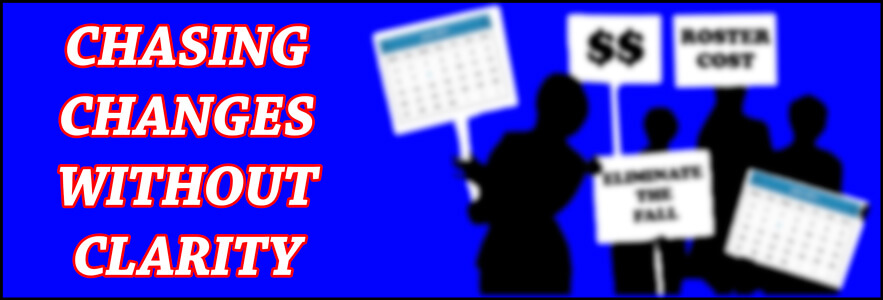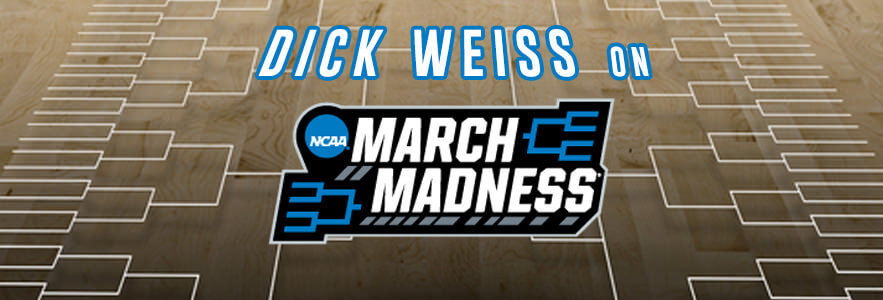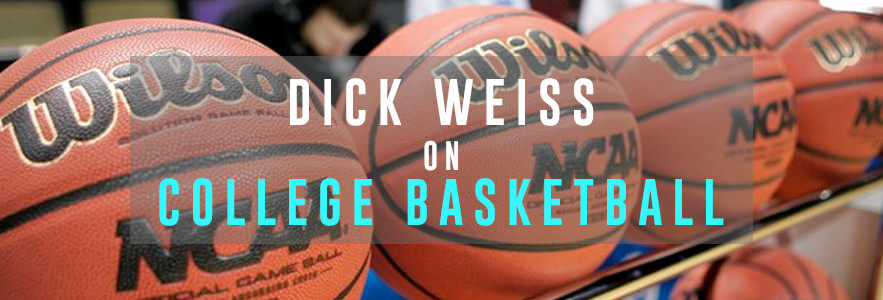I hate to say it but Americans protest these days like intramural volleyball players at a community college. We get so completely caught up in the emotional moment or physical method that the actual message itself often gets lost in the process. Apparently our memories get shorter with age; the Sixties weren’t all that long ago. Whether it’s social issues or just an attempt to change the landscape of the recruiting process in our little corner of the world, we’re simply not that good at it anymore.
As an example, in the national spotlight, take our man Colin Kaepernick. His message is extraordinarily valid and justifiably shared by millions of people (black and white) across the nation. It’s not difficult to agree with the 49er’s quarterback, however, the sitting or kneeling thing during the anthem isn’t quite the condemnation of America that it was intended to represent or how it ultimately was portrayed in the media. Truth be told, it could be easily considered virtually the opposite. In reality it’s just as easy to see it as a celebration of the stars and stripes and all that they stand for.
Think about it for a moment. Try kneeling during the national anthem in North Korea, piss off Vladimir Putin with a protest or burn something in Beijing. You and those you love would permanently disappear quicker than the presidential campaign promises we’ve been bombarded with the past two years. To Kaepernick’s credit he’s generated important awareness and is said to be writing a check with quite a few zeros on it for some relevant charities. The issue with number 7’s protest is that his choice of methodology and his subsequent public admission to not having actually voted tremendously overshadow his intended message.
In our own world, while not exactly a major foray in to societal issues, the same could be said for the recruiting “revolt” of some of our college programs back in September. Let’s face it; this was hardly a protest to begin with. Boycotting a recruiting weekend that isn’t favored by an influential faction of the coaching electorate in the first place is hardly a sacrifice. Furthermore, the portrayal of it primarily being about the lack of necessity for a fall weekend on the recruiting calendar carries all the reliability of a Samsung Galaxy Note 7.
One element of the community (See the top of the national rankings) has long maintained that there is no need for a non-scholastic weekend in the fall. However, there are plenty of others who contend that it indeed has its place and there are always going to be plenty of coaches embracing the belief that they can make up for a lack of resources by outworking their comfortable and well budgeted peers. And why shouldn’t they be allowed that opportunity when just 18 percent of all 349 Division – I programs are members of Power Five conferences. It’s critical that we never forget that recruiting legislation has to serve the masses, not just the well-financed upper echelon.
As for the multitude of rationalizations provided for the elimination of the fall weekend…there’s a simple answer…stay home.
You need or want to be home for your current roster? Don’t go.
You need to have official visits on campus that particular weekend? Don’t go.
You want that elusive “better quality of life”? Don’t go.
Or at least for that last narrative reach back and remember the fact that it’s never been a nine to five job and the recruiting calendar today is more conducive to a home life than at any time in the history of the profession. Additionally, it’s hard to claim that you need more time on campus when you’ve recently added home visits with the junior class to the annual off campus pilgrimage.
Furthermore, not going is actually a valid solution if you legitimately buy into the claim that it’s a meaningless weekend that serves no purpose in the recruiting process. No problem. If it carries such little weight then, in turn, it shouldn’t keep anyone up at night when the recruiting competition chooses to go to the gym while you decide to stay at home. Put your head on your own pillow rather than Marriott’s and sleep well my friend.
A Division I program has 112 days to use as they please across the course of the academic year and seven recruiting opportunities per prospect. There are plenty of options between practice, games and the two spring evaluation weekends to cover the ground that needs to be covered in the context of the school year. It’s inevitable that there will be days that someone is in the gym when you’re not. Legislating against the insecurities of recruiting decisions has never been a practical option on any level.
If you’re worried or paranoid because you stayed on campus when those you’re recruiting against chose to go to the gym then you’ve got a potentially greater issue with the ineffectiveness of your recruiting communication efforts. If you can’t successfully explain to a prospect or her parents/coach just why you or your staff being on hand for a single three day weekend isn’t actually an essential component in her decision making process then it’s highly likely that there are other elements of your recruiting pitch getting lost in translation as well. A September weekend just may be the least of your worries.
In the bigger picture the reality is that the NCAA could care less if there is a fall weekend or not. The Power Five coaches who stayed home this fall picked a fight with the wrong entity. If their issue is indeed with the mere existence of the weekend itself then their beef is with the hierarchy in Indianapolis who manages the recruiting calendars for all sports with considerable input from the various coaching associations. So…in that light…their issue is actually with…(Here it comes!)…themselves. There are doctors for that kind of misapplied logic and denial.
That thinly veiled excuse for a “protest” this fall had no bearing on the future of the recruiting calendar. The timing shortchanged players who had already committed to events. And they also shortchanged event operators…but then again, nobody is actually losing any sleep over that one, are they? Of course they didn’t completely shortchange the event operators as there were still plenty of rosters purchased after the fact by those recruiting rebels who stayed home for the weekend. Seems to be just a tad bit hypocritical when you’re willingly writing checks for an event that was boycotted and portrayed as unnecessary. Kind of takes the wind out of the sails of solidarity, don’t you think?
Further magnifying that point is the fact that it wasn’t difficult to find a large contingent of boycotting coaches who would confidentially confide that their decision to participate was more in the name of conference unity rather than actually being on board with the dog and pony show portrayed publicly.
So on closer examination and without Wikileaks getting involved, it might be safe to assume that there may have been a subplot to Basketball Boycott 2016.
If you’ve been listening closely over the years to those sideline conversations in the spring and summer, a reasonably astute individual can deduce fairly easily that the unspoken agenda among the college coaches is in reality the cost of roster packets and admission. Price, Policy and quality have always stirred the pot way more than three non-scholastic days in the gym each autumn. It’s been a long debated issue and the renewed conversation is hardly a surprising turn of events given the recent greed and self-promotion of some event operators.
This argument at least has some degree of validity to it. At the same time, it’s important to acknowledge that considerations that go into setting a price point extend well beyond paper, printing and binding. Few people appreciate the depth of the costs involved in an organized, well run, quality recruiting event. As with any business entity you’ve got operational costs that include time, labor, facilities, insurance, and, of course, taxes just to name a few. The events cutting corners are the ones reaching deeper and deeper into the pockets of clubs, parents and recruiters. USJN’s Chris Mennig, largely regarded as the preeminent event operator in women’s basketball, often references exceeding “fair market value” in discussions regarding the changing landscape of certified events.
“Many event operators don’t realize (or don’t care) that this is a SERVICE INDUSTRY & that is just it, we are here to SERVE all patrons involved. No industry/business is perfect and you can never please everyone, but ours obviously hit a ‘breaking point’ due to the actions of a small few”.
The point is easily made when you have events charging full price for a second staff member or gouging collegiate budgets for 90 percent of the packet cost simply for admission minus the rosters. Or you could take a closer look at the strategy of paying (We’re not in Kansas anymore, Dorothy) top tier programs to show up and play a single game because they’re already in town for another event thus “strong arming” active recruiters of said rosters to be courtside at full packet price for less than two hours of basketball. No event operator or club manager/coach working that particular street corner can legitimately claim to be “about the kids”.
But, alas, we do live in a free market society. Less than ethical and financially motivated event operators are free to rob, steal and pillage as they please. But then again, the coaching community is also entitled not to buy the product.
A few years back at a WBCA legislative meeting an NCAA attorney literally fell scrambling to get to the microphone when the word “boycott” was brought up in regard to the cost of rosters at certified events. She was adamant that the membership didn’t want that word “on the record” least it be perceived that the coaches association was conspiring to restrain someone’s potential income. Funny how the threat of litigation strikes fear in the hearts of many.
As to our original premise, let’s face it; coaches would have been lousy demonstrators back in those unsettled days 50 years ago. Seriously…boycotting the fall…not exactly going way out on a limb with that strategy are they? If they really want to make a statement they need to get bold. You don’t make much of a point when you risk so little. You have to be willing to forego an event where some of your priority prospects are playing in April or July, not September.
Or, better yet, you stick with the established events and ethical operators who consistently demonstrate that they are cognizant of the fact that there are two sides to every business equation. Inform your recruits well in advance that you won’t be attending tournaments run by specific self-serving groups not conducting business in a practical manner. Coaches, parents and athletes don’t want to spend their money to play in gyms with empty sidelines. Tell them where you will be and count on club coaches and operators to serve their athlete’s needs rather than their own pockets and agendas. Wishful thinking? Probably. Parents need to know why specific events are on the club schedule and they deserve to know the reasons those were chosen over others. Hold club coaches/managers accountable. In the world of checkbook club basketball the days of “blind trust” are over.
College coaches also have to tell their recruiting constituencies specifically why. Coaches have to be willing to say “we’re not attending the Select All-Star Elite Invitational Classic because they’re charging more than then a major medical procedure at Johns Hopkins”. If you want change you have to speak up on the big stages of spring and summer rather than whisper in the winds of autumn. That’s not crossing any legal lines, it’s just saying we’ll be in this gym rather than that gym…and here’s why.
We constantly bemoan the attention span of today’s players and the younger generation as a whole just hoping that they’ll stay focused on a task and see it through to completion. Yet for all of the conversation surrounding the so called “boycott” of the NCAA fall evaluation weekend the passage of time and the start of the season has muted the conversation to a level making a quiet library sound like Chicago following the Cubs final out.
Was the “boycott” a success? In terms of participation you would have to say yes, though not with a unanimous effort. In terms of clarity of message…not even remotely. Random telephone and courtside polling of coaches before, during and since the evaluation period has provided evidence that many had little or no idea what the actual intent was in the first place.
Yes, the season is at hand, we’re in the middle of a signing period and April is down the road a bit. However, if the issues are genuinely important then the dialogue has to continue. Let’s see if the WBCA membership as a whole votes to kiss the fall evaluation period good bye or if some coaches or conferences take a stand calling out exploitation events (and operators) and stick to those providing a fair return on the dollar. The legacies of Cesar Chavez, Abbie Hoffman and Angela Davis might be proud yet!
Mark Lewis is a national evaluator and photographer for Blue Star Basketball as well as the lead columnist for Blue Star Media. Twice ranked as one of the top 25 Division I assistant coaches in the game by the Women's Basketball Coaches Association (WBCA), he logged 25 years of college coaching experience at Memphis State, Cincinnati, Arizona State, Western Kentucky and Washington State. Lewis serves as a member of the prestigious McDonald’s All-American selection committee as well as the Naismith College Player and Coach of the Year committees.






